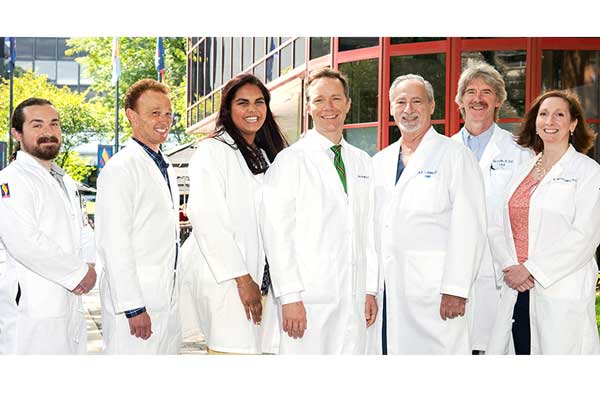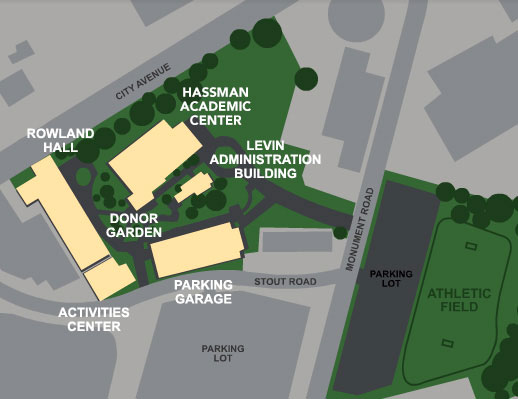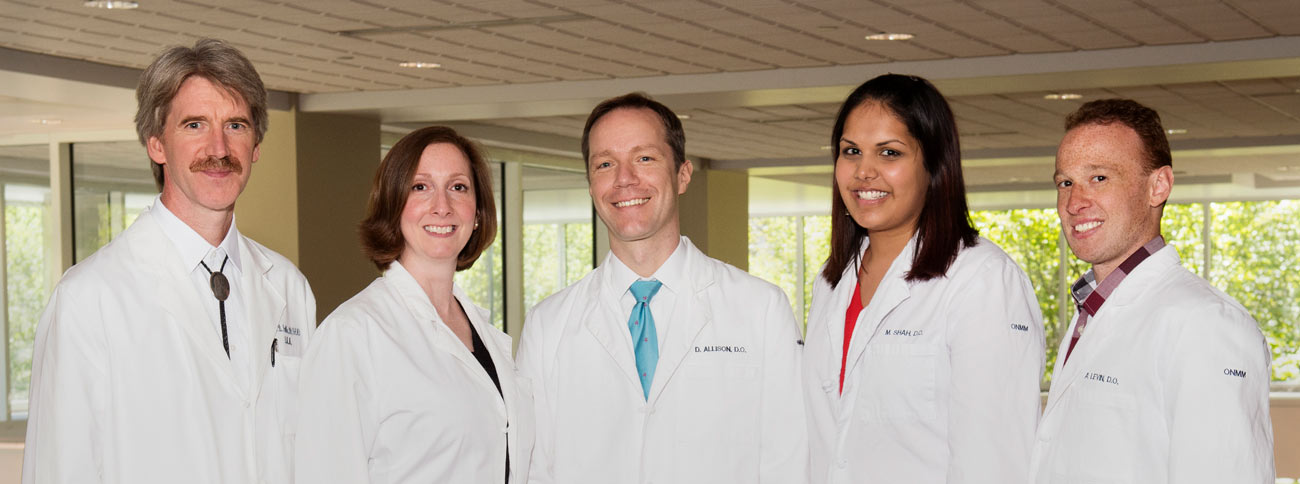 Call for Appointment
Call for Appointment
PCOM Osteopathic Manipulative Medicine (OMM) Practice
4190 City Avenue, Suite 320
Philadelphia, PA 19131
Our office staff and physicians are a group of caring people who are committed to carrying on the long-standing tradition of helping people improve their health and overcome problems by means of diagnosis and treatment with osteopathic manipulative medicine (OMM). We are proud to say that we are an osteopathic family, with years of working together to provide care for our patients.
The osteopathic manipulative medicine approach began in 1874 and has continued to develop since that time. Certain principles have remained consistent, which include:
Our providers use all types of osteopathic manipulative treatment (OMT). These range from gentle articulation and soft tissue techniques, to myofascial release techniques, from release by position techniques such as counterstrain, to balancing techniques, such as balanced ligamentous tension and ligamentous articular strain. Very gentle techniques, such as osteopathic manipulation in the cranial field can used, as well as more direct techniques, such as high-velocity low-amplitude techniques. There are other types of OMT as well.
The notices below are for your review. You do not need to print them or bring them to your appointment. We do ask that you print and complete the Receipt of Notice of Privacy Practices Form (above) to acknowledge the receipt of the notice of privacy practices.
Schedule an appointment: 215-871-6425
Billing and insurance: 215-871-6910
Fax: 215-871-6490
Monday through Friday, 8:30 a.m. to 4:30 p.m.
OMM Practice at PCOM
Philadelphia College of Osteopathic Medicine
Rowland Hall, Medical Office Building
Suite 320 and 330
4190 City Avenue, Philadelphia, PA 19131
The OMM Practice is located on the third floor of the Medical Office Building (also known as Rowland Hall) on PCOM's campus.

Our mission is to enhance the health and promote the recovery from illness for patients at Roxborough Hospital by providing care from an osteopathic manipulative medicine perspective and approach. The Roxborough OMM consultation service is available five days a week, Monday through Friday.
Our scope of care includes all ages and all severity of illness—from infants and pediatrics to adults and geriatric patients; including those with mild, moderate and severe levels of illness; even patients in critical care settings. We address patients with a wide range of medical and surgical illnesses as well as specific neuromusculoskeletal problems.
The osteopathic manipulative medicine approach can be particularly helpful in treating patients with pneumonia and other respiratory infections, post-operative ileus (best results are obtained when OMM treatment is started soon after surgery), acute coronary problems that have stabilized or those that had status-post chest surgery.
A simple model used in the osteopathic approach is to look at patients and their problems from the perspective of neurological, fluid and biomechanical points of view.
The neurologic perspective in the care of hospitalized patients includes addressing imbalances in the autonomic nervous system, as well as any specific somatic nerve involvement. Many acutely ill patients have an increased sympathetic tone and can benefit from hands-on osteopathic treatment to reduce this facilitated state, such as patients post-op abdominal surgery, who are at high risk of developing ileus. Other patients might need to have their parasympathetic tone addressed.
While the fluid perspective can include arterial and venous components, the lymphatics are an area of great importance in hospitalized patients, especially when inflammation or edema is involved. Removing restrictions to flow and using alternating pressure techniques can be helpful to improve lymphatic flow and drainage in patients—whether visceral, such as pulmonary congestion with pneumonia, or extremity-related, such as with wounds of the lower extremity.
A biomechanical approach can be used in many ways including improving rib motion to improve thoracic respiratory mechanics and improving motion of extremities, pelvis and spine.
OMM diagnosis and treatment has been shown to help in treatment of patients with a variety of problems. Studies have shown benefit in patients with pneumonia as well as asthma, even localized problems such as children with otitis media. OMM has been shown to be effective in preventing post-operative ileus and atelectasis as well as improving the hemodynamic status of patients immediately following cardiothoracic surgery.
Kilbert B, et al. "Effect of OMT on hospital length of stay in elderly patients with pneumonia: a meta-analysis." Scholar: Pilot and Validation Studies, vol. 3, issue 1, (2022; 25): 5-9.
Fuller DB. "More information on osteopathic manipulative medicine consultations for hospitalized patients." J Am Osteopath Assoc. 2020;120(4):217.
Crow WT, Gorodinsky L. “Does osteopathic manipulative treatment (OMT) improve outcomes in patients who develop postoperative ileus? A retrospective chart review.” Int J Osteopath Med, vol. 12, issue 1, (2009; 12): 32-37.
Noll, DR et al. "Efficacy of osteopathic manipulation as an adjunctive treatment for hospitalized patients with pneumonia: a randomized controlled trial." Osteopath Med Prim Care, vol. 4: 2, (2010).
Baltazar et al. "Effect of osteopathic manipulative treatment on Incidence of postoperative ileus and hospital length of stay in general surgical patients." J Am Osteopath Assoc, vol. 113, no. 3, (March 1, 2013): 204-209.
O-Yuvati et al. "Hemodynamic effects of osteopathic manipulative treatment immediately after coronary artery bypass graft surgery." J Am Osteopath Assoc, vol. 105, no 10, (October, 2005): 475-481.
SL Sleszynski, Kelso, AF. "Comparison of thoracic manipulation with incentive spirometry in preventing postoperative atelectasis." J Am Osteopath Assoc, vol 93, no 8, (August, 1993): 834-8, 843-5.
Guiney et al. "Effects of osteopathic manipulative treatment on pediatric patients with asthma: a randomized controlled trial." J Am Osteopath Assoc, vol. 105, no. 1, (January 1, 2005): 7-12.
Hodge, L., Downey, H. "Lymphatic pump treatment enhances the lymphatic and immune systems." Experimental Biology and Medicine, vol. 236, (2011):1109-1115.
Mills, MV et al. "The use of osteopathic manipulative treatment as adjuvant therapy in children with recurrent acute otitis media." Arch Pediatr Adolesc Med, vol. 157, no. 9 (2003):861-866.
